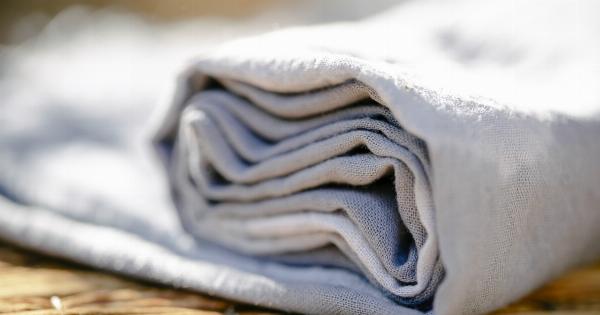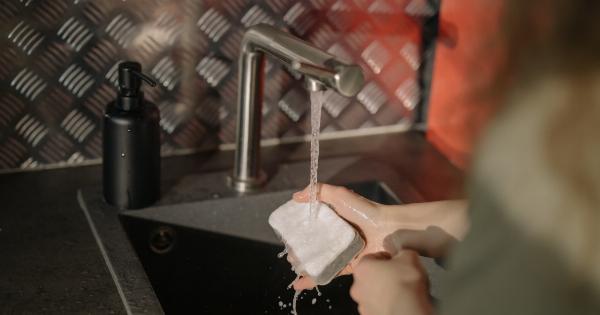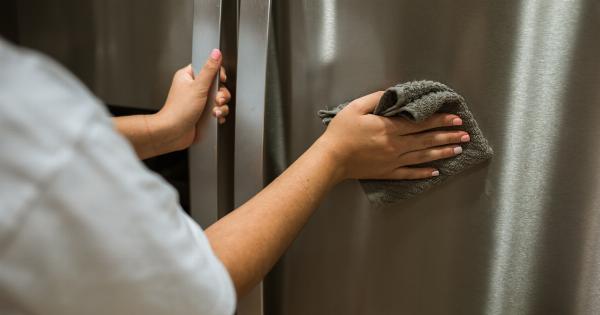When it comes to keeping a clean kitchen, one of the most essential tools is the dish sponge. These little scrubbers work tirelessly to remove the grease, grime, and food particles that can accumulate on our dishes and countertops.
But over time, even the most reliable sponge can become worn out and less effective. In this article, we will explore the different ways to renew your dish sponge and ensure that it stays in top condition for longer.
The Importance of a Clean Dish Sponge
Before we delve into the methods of renewing a dish sponge, let’s understand why it is crucial to keep them clean and hygienic:.
1. Bacterial Growth: Over time, sponges can harbor harmful bacteria, such as E. coli and Salmonella. This can lead to cross-contamination and increase the risk of foodborne illnesses.
2. Foul Odor: Dirty sponges often emit a foul smell, which can make your whole kitchen smell unpleasant.
3. Ineffective Cleaning: When a sponge is heavily soiled, it loses its ability to efficiently clean dishes, making your cleaning routine longer and more tedious.
Methods to Renew Your Dish Sponge
Luckily, there are several techniques and cleaning solutions that can help you renew your dish sponge and extend its lifespan. Let’s explore some of the most effective methods:.
1. Regular Cleaning and Sanitization
To prevent bacterial growth and maintain the cleanliness of your sponge, it is essential to clean and sanitize it regularly. Here’s a simple method:.
– Rinse the sponge thoroughly under hot water to remove any food particles. – Fill a bowl with equal parts water and white vinegar. – Submerge the sponge in the vinegar-water solution for about 5 minutes. – Rinse the sponge again under hot water and squeeze out any excess liquid. – Allow the sponge to air dry in a well-ventilated area.2. Microwave Sterilization
Using your microwave to sterilize your dish sponge is a quick and effective method to kill bacteria. Here’s how to do it:.
– Wet the sponge and squeeze out excess water. – Place the sponge in the microwave and microwave on high for 2 minutes. – Be cautious when removing the sponge from the microwave, as it will be hot. – Allow the sponge to cool before using it again.3. Dishwasher Cleaning
If you have a dishwasher, you can utilize it to clean and sanitize your dish sponge. Here’s what you need to do:.
– Place the sponge in the utensil compartment of your dishwasher. – Add your regular dishwasher detergent. – Run a hot water cycle. – Once the cycle is complete, remove the sponge and allow it to air dry.4. Boiling Water Method
Boiling water is an effective way to kill bacteria and remove grime from your dish sponge. Here’s the step-by-step process:.
– Fill a saucepan with water and bring it to a rolling boil. – Submerge the sponge in the boiling water for about 5 minutes. – Use tongs to remove the sponge from the water. – Allow the sponge to cool and dry before using it again.
5. Natural Cleaning Solutions
If you prefer using natural cleaning solutions, you can try these alternatives:.
– Lemon and Salt: Cut a lemon in half and sprinkle salt on one of the cut sides. Scrub the sponge with the salted lemon to remove stains and odor. – Baking Soda: Make a paste by mixing baking soda with water. Apply the paste to the sponge and scrub gently. Rinse thoroughly.6. Replace Regularly
No matter how well you clean and renew your dish sponge, it will eventually wear out. It is recommended to replace your sponge every two to four weeks, depending on frequency of use.
This will ensure that you always have an effective and sanitary tool for your kitchen cleaning tasks.
Tips for Prolonging the Lifespan of Your Dish Sponge
Alongside cleaning and sanitizing your sponge, here are a few tips to help prolong its lifespan:.
1. Drying: After each use, squeeze out as much water as possible from the sponge and allow it to air dry. Avoid leaving it in a damp environment, as this can promote bacterial growth.
2. Separate Sponges: Assign different sponges for specific tasks, such as one for dishes and another for countertops. This helps prevent cross-contamination.
3. Don’t Overuse: Avoid using the dish sponge for tasks it isn’t designed for, such as scrubbing the stovetop or bathroom surfaces. This can cause the sponge to wear out faster.
4. Be Gentle: While it’s important to scrub away stubborn stains, be mindful of not aggressively scrubbing delicate surfaces, as it can damage both the surface and the sponge.
Conclusion
A clean dish sponge is crucial for maintaining a hygienic kitchen and ensuring effective cleaning.
By regularly cleaning and renewing your sponge using methods like regular sanitization, microwave sterilization, dishwasher cleaning, boiling water, or natural cleaning solutions, you can keep your sponge in top condition for longer. Additionally, remember to replace your dish sponge every few weeks to maintain optimal cleanliness.
Lastly, by adopting simple practices like drying the sponge properly and keeping it separate for specific tasks, you can extend its lifespan and make the most out of your cleaning routine.































